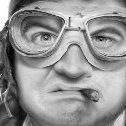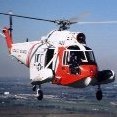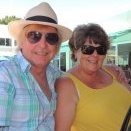Leaderboard
Popular Content
Showing content with the highest reputation on 01/27/2024 in all areas
-
Remembering my friend Lothar who died so suddenly a couple of years ago, today is his birthday. A true gentleman and a very generous friend indeed. Blue skies old chum.15 points
-

MiG 21 WHIF
BloorwestSiR and 10 others reacted to chrish for a topic
The models I'm donating to the legion museum, all cleaned, fixed and, packed A couple of 110 G's Thats gonna free up some room!11 points -
Hello guys, after many time looking at your wip topics and much learning from them, I just decided to post my first 1/32 aircraft model. Its the Meng Fokker dr.I as its not a big aircraft and my space on the shelves is limited. As far as I have seen, its a nice model with some issues such as the upwards curved wings that I could easily fix with hot water and some bending. Fit is really good so I will paint all wings and many other parts separately from the main fuselage. I decided to do the Goering Scheme from the kit instructions, as my last finished model was already too red (a Tamiya 1/12 Ducati 888) I am usually a very slow modeller, mostly due to my job where I usually am away from home several days per week, so this time I'm trying to make a fast build and decided not to add any 3d printed detail. Usually I like to add self modelled 3d printed parts. I tried painting some plywood effects on the cockpit sides and floor, in the end this is not really visible but I could practise a bit. The cockpit side planks were painted red so later I covered the painted plywood with transparent layers of brown-red. After that I painted the seat, cushion and belts. Everything was done with acrilic paints and acrilic washes made by mixing sepia Ink, gloss barnish (similar to future) and water. Hope you like it and sorry for my english, I may be writing with some grammatical errors.10 points
-
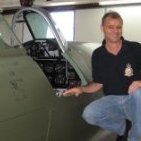
Hawker Hurricane 1/12 scale scratch build
Starfighter and 9 others reacted to hurribomber for a topic
The assembled and painted grip. the color takes a little of the surface roughness.10 points -
Happy Friday my friends Hey there, thanks for dropping in so to answer your questions - I just use normal, if very tired bits of sandpaper of various grits - I rarely wet sand the metal. The finish is created by polishing after sanding with 0000 wire wool. The rivets are done one by one and on this ship there are probably 3 x a normal aircraft unfortunately as the wings were the radiators so the surface has tens of thousands of them They are done with a awl set. The panel overlaps are deliberate and copy the real airframe - that is pretty much what this update will be about The fuselage is skinned like a Spitfire, from back to front with some overlaps - the fist step was analysing pictures to work out the skinning order - I started at the rear with a tape template, using dymo tape to define borders where needed. I always mark out rivet lines on the tape template so they are right on the model as what can look a straight line rarely is... these are those panels after rivetting and making the holes for the circular hatches..the next step is to peel the tape off, wash them with a stiff brush and solvent to get all the tape discs left by the rivetting off, and then finally turn them over and burnish hard with a rod to remove the 'quilting' effect... ..with that panel down and the others that form the bottom layer, I need to fill the upper edges as with another panel to go on top if I don't a visible ridge will appear when I lay it down... ..then the next panel that wraps across the spine - you can see some rivets done with the panel in place have deformed as the foam/filler skin has given out under pressure.. nothing can be done about that.. ..the edges are also filled again.. ..with that done, the skins on the tail are marked out....this is an intersting design feature as the tail is actually the oil cooler so the surface air cools it rather than a cooler sticking into the airflow and causing drag.. ..it has a very distinct 'quilted' appearance which is exactly what you get if you don't burnish a rivetted panel, so this will be fun to make.. ..same principle applies - tape templates & dymo tape..just thsi time i only lightly burnish the panels before adding them.. ..with the fuselage skinned another distinctive feature needs doing - there are radiators running the full length of the fuselage each side (again to reduce drag by hanging them off the wing or under the chin).. ..like this.. ..I pondered how to do it and eventually tried 3D printing a male mould I could work from - I figured I could burnish the shape in one piece if I was careful.. ..it had to be in two parts to be printed though.. ..these were then superglued to a bit of perspex.. and the work started.. ..millions more damned rivets... ..and then scored & carefully broken away.. ..I was worried that I would need to fill the 'tubes' but it seemed rigid enough so I bit the bullet, took a deep breath and got ready to stick it in place.. ..quite a bit of work that, so here is a walkaround.. ..gonna be a shame to paint it TTFN Peter9 points
-

Zvezda Star Destroyer - a new detailing project
Greif8 and 7 others reacted to The Madhatter for a topic
hey Neo Sorry mate, nothing really has changed since the last update. I've been busy doing other things as a result of supply issues. which pertained to running out of fiber optic cable. I did buy more but the stuff that came in after a nearly 4 month wait was not the size I needed. I just haven't had it in me to source more. However, as a small consolation for you, I have included some relatively recent pics that hadn't made it to an update yet The second layer has also been started and nearly finished: Test fitting the second layer : Those little brass pipes like the one shown just below the written D on the base plate, are for feeding the SMD spotlights through the sidewalls into the internal cavity. I am regretting drilling out so many holes that need to be filled. I haven't even started on the side walls or anything else yet Sorry mate, but that's all I have. I do intend to return to this (yeah I know, that sounds sooo familiar. We've all been there - don't judge ). Maybe once I have finished my current project, I'll attempt to bring my mojo levels up enough to go back an try get that base finished. If anyone lives in Melbourne and feels like threading some fiber for me, drop me a line ... I expect to hear from no one Regardless, thanks Neo, for the continued interest all the same. I'll try get this done ASAP but I don't want to rush it either. LOL, not that I can be accused of that any time soon8 points -

Hawker Hurricane 1/12 scale scratch build
Starfighter and 6 others reacted to hurribomber for a topic
I used 1.5mm solder wire for the spade grip as it is the easiest to bend. Before (!!) I wrapped it with 0.3mm copper wire. The surface could be a little less rough for my taste, but sometimes I have to make compromises... The brake lever is made of 1mm brass sheet7 points -
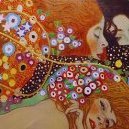
Thoughts about Possible Future Kotare Releases - NOT a wishlist
tucohoward and 6 others reacted to Tony T for a topic
I really hope you P-51B fans get what you want very soon as the endless petulance has been driving others insane for years. I'm sure it would sell by the container load. Personally, not interested, but please somebody make the P-51B to shut them up! Tony7 points -
Today I decided to get over a hurdle... or knock it over clumsily. The PE canopy. Here it is... so far. It's not perfectly straight. I've been working on the crew and cast, too... none of them are finished, yet. There will be a couple other figures from other builds that will also join them. PE details like the canopy are just the thing to put my mojo on hold. Happens every time. Figures do it too, but to a lesser extent. So I try to pace myself by doing a bit here and there of each until I can get through them all. Thanks for looking.7 points
-
Marcel BLOCH MB 152C1 Azur 1/32
chukw and 5 others reacted to PEYSSON Gilles for a topic
Good evening at all Here is the continuation with the manufacture and painting of the instrument panel and other modified instruments. As a reminder, I only use brushes with Enamel paints. Let's see the photos ! And now the cockpit assembly : Riveting of fuselage and wings. The riveting was done point by point with a sharp tool because I don't have a "Rosie". Fuselage assembly : Drilling of the 2 "Custodes" ! Rear position lamps : That's all for tonight. I hope to be able to show you the rest later this next week. Thanks for following us and see you soon. Have a good weekend Gilles6 points -
Another small update. The upper mizzenmasts are finished; these took a considerable amount of time to clean up as several of the parts either had a lot of flash, ejector pin marks, or in a couple of cases nasty seams. I plan to paint the upper mast assemblies today and get them installed on the lower masts, so I hope to have some decent photos of interest for all of you tonight. Below are the parts that make up the mizzen upper masts. At the bottom is the mizzentopmast, above that is the mizzen topgallantmast and above that you can see the replacement mizzen royalmast and short skypole I made out of brass tube and steel rod. I would have liked to use wood but the diameter needed is too small to drill them out for pinning while retaining enough strength to avoid splitting. Using brass tube saved weight and allowed me to use smaller diameter rod for both the sky pole and a pin. The completed upper masts assembly. Sorry for the rather dark photo. Another aspect of the assembly. The brass tube/steel rod replicate the parts they replaced fairly well. I gave up some small details to gain strength on this and the other replacements. I think the trade off worth it, but the proof will be when I start rigging. Ernest6 points
-
Continuing work on the PQ-14. The coupling system printed on 3D printer is pre-installed on the wing. The model is prepared for priming.6 points
-
Last I posted, I stated that my next sub-project would be the windshield and its surround. And in order to do that I needed to complete my forward fuselage jig, load the upper longerons, and use that combo to build up that windshield subassembly. What the jig lacked at that time was a good stout floor support structure - heavy members to eliminate flex. That was done successfully with .25 x .75 inch section beams, and now the jig is working to perfection. Here it is with the longerons loaded, and the largely completed windshield and surround assembled on it: You are going to see alot of that jig in future posts. That is going to assure me of a properly integrated vitally important forward fuselage. So that windshield. Another task was to try to improve on the transparencies. Was having lots of troubles with the ones I have printed up already, with Nova3D clear. So I pulled out the wallet and got me some "Resione G217 clear", which a guy on U-tube couldn't say enough good things about. So did another. And indeed this stuff is more well-behaved than the Nova3D. It isn't as sticky, it cures with shorter exposure times, and seems to have less discoloration (darkening). And, it holds detail better. What you do not see there is days and days of failed prints, and flawed parts for one reason or another. I have a pile of rejected parts! What you do see there is the result of exhaustive sanding and polishing and clear lacquer paint layers. There - all the transparencies for the cockpit enclosure, including BTW the aft windows. Well, minus the Malcolm hood. I made one with the new resin, and it is much better than the test parts I made a couple months ago. But it isn't quite ready for prime time yet. Another post soon. The front bullet-proof flat glass in that picture has already been installed into the windshield surround assembly. Can you see it? It's pretty clear! So as you can surmise, I have declared a limited victory on 3D printed transparencies over a vacu-formed part or parts. These are not perfect, but they are pretty darned good. And the accuracy and added detail is much more than a vac-formed part could give me, pretty sure. Next post, you will see among other things the top and side glass bonded into the windshield frame, to accompany the front glass already there. My aim is to win over the doubters - hope I can. So here is the windshield surround assembly freed from its jig: The assembly consists of details you have seen already but unassembled - the cowl, now painted window frame, the shroud (with handholds and defroster nozzles added, and painted), and the painted IP support frame. Two oxygen system related gages have been added, the decals provided by Peter Castle's (Airscale's) Lope Hope decals, which are second to none. There is more to come for this frame. That spindly uber-fragile windshield frame is considerably more robust now. I like. So what else - oh, the instrument panel! It was not very difficult to Rhino model one, and print it up. Here it is overlaid on top of another of Peter's Lopes Hope decals: I initially had some doubts the holes and dials would match up - but they do. Perfectly. Nice going Airscale. Painted up: If y'all really like it, give Peter the credit - it is the decals that really make it special. So this is a 3-piece laminate. The front is my 3D printed part, a middle .005 inch thick clear plastic piece, and a back .02 inch thick white plastic sheet with the decal applied to it. The challenge is to bond them together without contaminating the dials. Mission accomplished although with much hand-wringing. Also, I began the N3B gunsight. This is a challenge with all the mirrors - here is a shot from the parts catalogue: So off to the races. Rhino design took some time for sure. And the parts are soooo small. Here: In front is the mounting bracket. On the left is the "head assembly". On the right is the gunsight body. And center rear is the lower mirror support fitting. And here is what I have so far: Parts fit together pretty well. What you see here is a testament to the latest technology of affordable 3D printers. It continues to amaze me. Still to come is the very dinky lower mirror, an electrical wire, and the familiar 45 deg slanted glass. Next post! In anticipation of the soon coming windshield window installation, I used some of my rejected parts to make another windshield assembly for the purposes of fabricating the .005 inch thick exterior strips: It consists, of course, of the four glass parts and the spindly window frame, painted with a coat of primer. Spindly no longer. I even added globs of CA to the joints on the interior side to make it still more robust. There will be fairly forceful burnishing and other manhandling things going on during the process of making the exterior strips, so it needs to be strong. Better done on this mock windshield than the one I will use for the model itself. Hopefully you can see, BTW, how nicely the individual window panes fit into the frame, providing nice little grooves or valleys for the exterior strips to match up to. The advantage of digital design and manufacture. Looking forward to that work, I think. Next post you should see a completed windshield/surround sub-assembly, perhaps even skinned. Then it will be on to fuselage side panel assembly - frames and skins and longerons - all done with the new jig. Take care until next time. Thanks for looking in!5 points
-
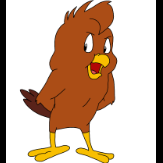
F-109
turboprop4 and 4 others reacted to Dandiego for a topic
Surface prep and gloss black undercoat has been finished. Bare metal next! Dan5 points -
Thoughts about Possible Future Kotare Releases - NOT a wishlist
Archimedes and 4 others reacted to Christa for a topic
As many of us know, two projects are underway to produce airworthy Hawker Typhoon aircraft, Typhoon Legacy's JP 843 in Canada and The Typhoon Preservation Group's RB 396 in UK. Each of those projects hold, and are gathering, a wealth of detailed knowledge, perhaps with some value for a new Typhoon kit producer. Each has attracted significant funds from numerous supporters, perhaps of relevance for sales of a new Typhoon kit release. TVAL links with WnW hinted that exact airworthy restored, rebuilt or replica aircraft assist model producers. Also, the only original Hawker Typhoon is in the RAF Museum's collection, usually displayed at Hendon, London, so size, shape and detail issues may not be too hard to resolve. Both Airfix 1/24 Hawker Typhoon kits' current prices have fluttered well above £200, so it may be that a Kotare quality 1/32 Typhoon would be excellent value for money, BUT, a Kotare quality North American P 51 B Mustang might sell more copies, quicker.5 points -
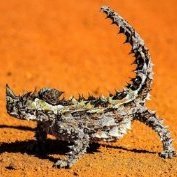
Mitsubishi A6M2 Reisen, PO1C Tetsuzo Iwamoto, Zuikaku Fighter Squadron, RFI
shadowmare and 3 others reacted to Uncarina for a topic
I started this build early in 2017, stopped, started again, stopped again, and this time the third time did the trick: This is the wonderful Tamiya A6M2 kit which I modified according to Ryan Toew's tweak list, adding the Quinta cockpit set, my own custom masks, Eduard's stencils, and MRP paints (except for the cockpit where I used AK Real Colors). Since no smooth tread tires are available I used the Eduard offerings sanded to remove the tread. I lightly finished with a pastel wash. Cheers, Tom4 points -
I decided to get the instrument panel finished now that my 0.5mm ball bearings have arrrived (finally) from China. That means I can make up the switches for the bomb selector panel on the lower right of the IP by taking short lengths of No. 6 guitar string and gluing a ball bearing to the tip. Then a dob of red paint and away we go! Shorten them to around 2mm and fit three and the last one flies away Aargh! Ho hum, make another one then all finished, just the gunsight to add when everything's in the cockpit Speaking of which, I've done a rough fit of some of the components of the left cockpit side. Some chipping done. Still lots to do like a dirtying up job with red/black mix, extra wiring to add but I'm pretty happy with this rough mock up. Hopefully get the seats fitted tomorrow. The closeup is going to be a nightmare I can tell. So many bits to align and seat properly. HELP!4 points
-
The masts have been painted and assembled. The upper masts were often left natural wood color so that they could be more easily inspected for excessive wear. Most ships of the time period carried enough spare upper masts to replace sections as required, or repair/jury rig battle damage. I sprayed the upper masts a middle brown shade and oversprayed that with a light coat of Tamiya transparent yellow to give the parts a slight sheen and more warmth. My goal was to replicate wood, instead of painted plastic. Photographing the masts turned out to be harder then I thought it would be as without setting up my photo tent/backgrounds it was tough to get decent shots. The photos below do not really show the natural wood effect that well, but at least they are a good series showing the final progess from parts to complete masts. The brown has been airbrushed, I used Tamiya Flat Earth, and I was already happy that the colors seemed to mesh nicely, even at this early painting stage. A couple of steps later - the pictures of the earlier steps just did not turn out very well. Painting is complete and I have started assembling the seperate parts. Again, I am happy that the different colors and shades work well together. You can make out that I have varied the tone on the upper masts so that they don't look so monotone and, hopefully, more like actual wood. Close up of the foretop. Another aspect of the foretop. You can just make out the light sheen of the lighter brown. A poor shot of all three assembled masts. Both the fore and mizzen masts turned out very close to perfectly straight. The upper mainmast has a slight angle to the side that I will be able to take care of when I rig the shrouds and backstays. The complete foremast shot at the fighting top level. This photo shows the variations in color of the upper mast section well. I am happy with the wood effect. Different view of the foremast at the fighting top level. Squaring everything up was not as hard as I thought it would be. Ernest4 points
-
After 11 pages you guys still haven't got it. Kotare is busily cutting moulds for a 1/32 Short Sunderland. Well Kiwis and Aussies flew them as well as Coastal Command and I'm sure that the size won't be a problem. TRF4 points
-

Hawker Hurricane 1/12 scale scratch build
fab and 3 others reacted to hurribomber for a topic
Next thing is the spade grip. First I turn the gun firing button (3mm brass rod)4 points -
In related news, Gecko Models is to release a 1/16th PaK40! ...As well as an 1/16th Universal Carrier!4 points
-
This is a good point, as I do like ZM kits and have built several, but some of the internal detail is lost on me since I'm not an open panels/interior exposed kind of model builder. I'd prefer a model focused on exterior shape and dimensional accuracy. Not to say ZM kits aren't accurate, but I feel Id like more of the cost and R&D to be put to the overall accuracy of the models looks.4 points
-
Marcel BLOCH MB 152C1 Azur 1/32
LSP_Ray and 3 others reacted to PEYSSON Gilles for a topic
Good evening my friends and many thanks for your many messages. I'm sorry I've been away for the last couple of days. Tonight I'm going to show you the complete scratchbuilt pilot seat ; a lot of bending, welding and various adjustments. You'll see ....... In the end, I only kept the pilot's seat from the resin seat supplied by Azur. @ Mozart : thank you for explaining how to use MultiQuote Let's see the photos ..... Work on the two side panels. That's all for tonight and I hope you enjoyed it !!! Later in the week, I'll be showing you the brushwork on the instrument panel and centre console of the cockpit. Good night to all and see you soon .... Best Regards Gilles4 points -

Tamiya F-16 Aggressor, Kicked Up a Notch, April 11/24: Lighting Details
Paul in Napier and 3 others reacted to chuck540z3 for a topic
January 23/24 Before I start painting stuff, I thought I’d re-check the fit of the entire intake to engine parts. I’m glad I did, because the front engine fan part P24 will not fit the resin block that holds the landing gear below. As always, I use the kit parts to see how things should have fit, vs what Aires came up with, which usually has no instructions. Here is the same upper intake part B31 on the kit landing gear part B24, which provides a thin cylinder for the fan to slip onto. It slips on easily as shown, but those “ears” on the fan serve no purpose with the resin block in the way, so I cut them off. The other problem with the resin block is that it holds up the rear engine part C15, leaving a small gap where the engine assembly is screwed to the bottom fuselage. The reason the fit is poor is due to a ledge that remains on the Aires resin, while the kit part B24 on the right has a cutout. So it’s clear that I need to do more resin surgery, which I wish I had known about before I glued the landing gear bay to the bottom fuselage. I glued this block early, because of so many landing gear tolerance issues, so I wanted to fix the position permanently while I still remembered what exactly they all were. Not a big deal, but it made cutting into the resin block a lot more difficult than it needed to be. Using my David Union “Router” as they call it, also purchased from Troy Molitor a few years ago, I carefully dug away at the resin block to allow the engine fan and other parts to fit better. This surgery isn’t pretty and you have to be very careful to not let the router get away from you and scar adjacent parts, but it’s highly effective and thankfully totally hidden. Using the front intake parts as a guide to determine where the rear intake part should fit, the engine fan just slips on now like it should. The rear engine parts now clear the landing gear block and can now be screwed down properly. With those adjustments out of the way, I can now start painting the landing gear and cockpit parts! Cheers, Chuck4 points -

MiG 21 WHIF
themongoose and 3 others reacted to chrish for a topic
went from adding everything I could to the Tomcat to building this one out of the box....no consistency is my only consistency. early test fittings reveals that the cockpit tub sits on supports but may sit too low allowing a slight shelf above the cockpit sill and the fuselage opening I added shims above the supports to raise the tub which makes the tub fit a little better and then splashed on some paint then a wash and some "not accurate" Airscale instrument declals My wife looked in over my shoulder at what I was doing and thought I was just having fun with a weird color...till I pointed at my open computer page showing the cockpit Thanks for looking4 points -
Revell's 1:32 scale Bf-109 G-6/R-6
Tolga ULGUR and 2 others reacted to marcopreto for a topic
This is my first post in the forum and I'm sharing a few photos of one of the models presently at my workbench, my first 1:32 scale model ever, a Revell Bf 109 G-6. I've decided to try out this scale after years and years of being amazed by models in this scale. I could get my hands on this model at a very reasonable price and decided to give it a go! I'm only adding the canon gondolas from Eduard and the few other additions you can see are made from copper and solder wire, tin foil and aluminum tape. I hope to reach its completion soon and share a few more photos. Cheers3 points -
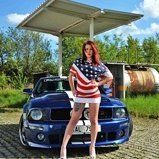
P-51B Don Gentile, 336FS,
TenSeven and 2 others reacted to Miloslav1956 for a topic
1/32 Trumpeter kit Kitsworlds decals Barracuda wheels All colours MRP3 points -
They will be releasing a SdKfz 251/22 to compete with the Trumpy offering: Sneak Preview: DW16022 Sd.Kfz. 251/22 Pakwagen - Das Werk Scale Models (das-werk-models.com)3 points
-
Speaking of the Typhoon, over a couple of days this week while I was visiting my sister, I happened to have some free time, so amongst the other things I did to occupy that time, I downloaded a pretty large batch of Typhoon photos that I had never seen before. Given the (apparently) growing amount of Typhoon photos that seem to now be surfacing, along with the one extant example, I think it's entirely reasonable to believe that Kotare might eventually pursue that as a possibility, which would be perfectly OK with me.3 points
-
The Guy Narrating, Harry Crosby, was a member of our local Group, The Grey Eagles up here in NH. I talked with him a few times before he passed in 2010. He published a book, Wing and a Prayer. He really was the Lead Navigator with the 100th BG. He said he became the lead navigator because some pilots liked a particular mission he was on (Him implying that he was, himself, nothing special). A real humble guy. What a trip it is to see his life fleshed out like this! The second I heard someone say "Crosby" I lit right up! Regards, Stephen3 points
-
I think this the universe telling you to stop using Vallejo paint. i think you should listen!3 points
-

Tamiya F-16 Aggressor, Kicked Up a Notch, April 11/24: Lighting Details
A-10LOADER and 2 others reacted to chuck540z3 for a topic
Thanks for that. Very interesting! Here's some more links for the "Ghost" paint scheme on F-16 Aggressors. There are at least two of them, 84-220 and 86-299, and I was able to see both of them in person at Nellis AFB 14 months ago in November. First F-16 Ghost Second F-16 Ghost Second F-16 Ghost -II First F-16 Ghost Video And of course a pic I took of #1 flying last year... While #2 was on the ground. Cheers, Chuck3 points -
With perfect weather for keeping me indoors I’ve been making great progress today, fingers are crossed for tomorrow. I couldn’t help myself, I’ve just set the front engine and windscreen in place, really was curious to see how it’s going to look. It’s starting to look a lot more business like now….3 points
-
And don't forget the potential for at least one RNZAF option, if not boxing. As for the P-51B: (1) I suspect that is a possibility, but also that a series of Allison-engined early Mustangs may be; a variety of variants and colours, and not done by anyone in 1/32 except the hard-to-find Hobbycraft (?) kits. And I admit that is also something I'd like to see, but I also think it could potentially happen. And (2) re the B/C, beauty is in the eye of the beholder3 points
-
Cheers Gaz, not been an easy build that’s for sure but happy with the result so far. Now there’s a thought Dugy! I haven’t researched the changes for a cannon-armed Hurricane but there can’t be too many. Mainly wing I guess? I’ll be starting my Hurribomber very soon.3 points
-
My personal option in such cases is the rock wall right outside my modeling room. I don't have near the fastball pitch as in my youth but it is still enough to make a recalcitrant model pay the ultimate price.3 points
-
I built the model as a 94 Squadron Kittyhawk 1a as flown by the Canadian ace Stocky Edwards.3 points
-
Just to say that John is determined to finish this project... it is so much more work than you think for a model like this.. John and his young family have also moved continents... twice... in the last few years... and the exodus from SA is something to see and unavoidable... about 18 months ago he produced these masters at our Club meeting... he was going through a torrid time getting the surface detail just right, this explains the multicoloured surfaces... but John wants it really good... pictures or it never happened... And just for fun we have another very talented modeller here, Marc Barris, - yes, a 1/32 scratchbuilder who has produced a Mirage F1AZ (Mudmover) as used in Angola... his technique is vac-form over wooden masters and slowly built up with lots of plastic, but here the double-knuckle undercarriage legs are built up in aluminium tubing... Sorry, the photos aren't the greatest quality, taken at night on the dining room table... Regards, Marc3 points
-

PCM Hurricane (late) 56 Squadron….finished!
geedubelyer and 2 others reacted to mozart for a topic
Patience, young grasshopper! I have also added the hand grip to the outside of the hood: The unpainted one where I’m still drilling holes comes from the new mould Revell kit, but after finishing it all I found that it is a bit too narrow for the PCM kit, so I had to revert to the PCM hood. At least I’ve saved myself a job for the Revell Hurricane. I experimented with adding the internal grips too but it didn’t really work very well, bit too much of an ask in this scale.3 points -
*** Finished*** 1/32 Dragon Bf-109E-3 "Dr Erich Mix"
Greg W and 2 others reacted to Tolga ULGUR for a topic
Some progress3 points -

MiG 21 WHIF
BloorwestSiR and 2 others reacted to chrish for a topic
well that was fun... not. fitting the empennage took a load of CA and a fair bit of putty to....fair in. Most everything has fit well up to the fitment of the empennage so it's probably something I did wrong. the fun continues Thanks for looking3 points -

Mitsubishi A6M2 Reisen, PO1C Tetsuzo Iwamoto, Zuikaku Fighter Squadron
Dpgsbody55 and 2 others reacted to Uncarina for a topic
And after seven years it's finished! Just need to add a light pastel wash and the tail tip light. Thanks to all of you who commented, asked questions, and shared advice! Cheers, Tom3 points -
The cockpit's done. Assembled everything and closed the fuselage.3 points
-
3 points
-

Hawker Hurricane 1/12 scale scratch build
geedubelyer and 2 others reacted to hurribomber for a topic
The rudder pedals in place. The foot straps made from a strip of heat shrink tubing.3 points -
*** Finished*** 1/32 Dragon Bf-109E-3 "Dr Erich Mix"
Tolga ULGUR and one other reacted to Dpgsbody55 for a topic
Yes, this is the worst part of an otherwise excellent kit. But it has to be said that the Emil cowlings were full of gaps. No wonder the first Freidrichs were so much faster on the same power. Cheers, Michael2 points -
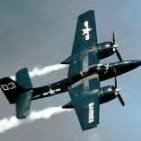
Fokker Dr.I Meng 1/32
Landrotten Highlander and one other reacted to Out2gtcha for a topic
Welcome to LSP! Love it so far! Yes, as Kev mentioned your English is far superior to my Spanish. Indeed, a very nice kit that has very few nigles, save the warped wings and delicate usually broken when you get the kit middle wing cockpit surround. I completed mine a few years back as Vosses machine and had a fun time building it for sure. I really liked the kit. I did however make my own masks for the cowl face. Looking forward to seeing more!2 points -
Granted, there may be a thin line between the two, but what I've seen so far seems to be well thought out ideas as to what Kotare might conceivable do (the original point of the OP), vs what some might like to see in the form of really far out subjects, which indeed delve into the area of a wish list, so I think the majority here are definitely on track with the original intent.2 points
-
I spent the last bench session working on the maintop, topgallant and royal masts. I replaced the royalmast, as well as the sky pole, with wooden dowels that I turned down and shaped to the correct diameters. I will spare all of you photos of the large "Fail" pile as it took several tries before I was able to turn out decent parts. A repost of an earlier photo. The maintopmast at the bottom and the topgallant/royal/sky pole just above it is the part with the nasty curve. Everything above the topgallantmast was replaced. Photo showing the two birch wood dowels I turned and shaped positioned next to the areas they will replace. Close up of the topgallant mast, new birch wood royalmast and birch wood sky pole. I carefully cut the plastic part off the kit piece that you see on top of the royalmast. I drilled holes and inserted pins for strength. Here are all the parts that make up the upper masts. A rather dark shot of the assembled upper masts. It was a bit fiddly to line everything up as the wooden parts do not have the small locator sections on them, but I got there in the end. Though not perfectly straight, the new assembly is much straighter than the kit part was and it is much stronger as well so I will be able to more easily rig the upper areas without having to worry about overtensioning one side or the other as much. I should also be able to to tension the rigging to make small adjustments to square up the upper masts, much as was done in real life. Another angle of the assembled upper mast system.2 points
-

Mitsubishi A6M2 Reisen, PO1C Tetsuzo Iwamoto, Zuikaku Fighter Squadron
JeepsGunsTanks and one other reacted to Uncarina for a topic
The replacement canopies arrived from Tamiya USA free of charge, and while the molding irregularity was still present on the rear section, I forged ahead. I used the Montex mask set to protect the canopy inner and outer surfaces. This meant I applied a total of 44 masks, tedious work but worth it! Right now the canopy parts are just placed in position; I will be gluing them as one of the last steps. In the meantime, I have to add the gunsight, pilot's handholds and footrests, and the underwing counterweights. Not long now! Cheers, Tom2 points



